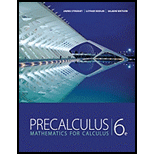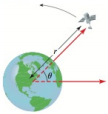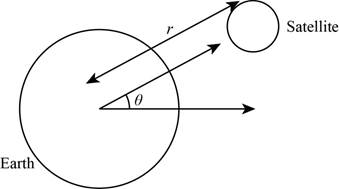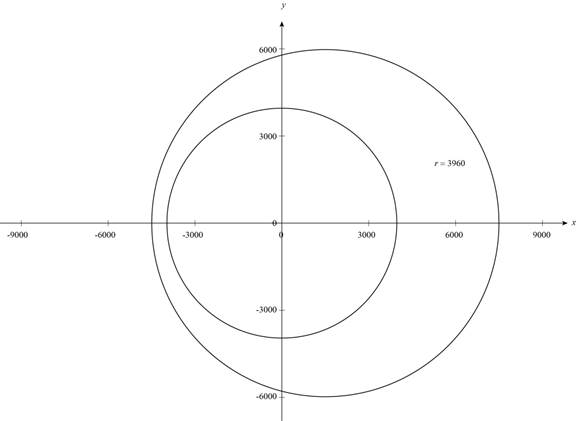
Orbit of a Satellite Scientists and engineers often use polar equations to model the motion of satellites in earth orbit. Let’s consider a satellite whose orbit is modeled by the equation r = 22500/(4 − cos θ), where r is the distance in miles between the satellite and the center of the earth and θ is the angle shown in the following figure.
- (a) On the same viewing screen, graph the circle r = 3960 (to represent the earth, which we will assume to be a sphere of radius 3960 mi) and the polar equation of the satellite’s orbit. Describe the motion of the satellite as θ increases from 0 to 2π.
- (b) For what angle θ is the satellite closest to the earth? Find the height of the satellite above the earth’s surface for this value of θ.

(a)
To Evaluate: The graph of satellite for
Answer to Problem 59E
The orbit of satellite of
Explanation of Solution
Given
The orbit of the satellite of the given radius is,
Where,

Figure (1)
Calculation:
Graph of the circle of the radius 3690 is,

Figure (2)
Figure (2) shows the graph of circle
From the graph, it can be noticed that if the angle increases from
Thus, the motion of the satellite is elliptic.
(b)
To find: The angle
Answer to Problem 59E
The angle
Explanation of Solution
Section1:
For the satellite to be closest to the earth, the value of
Range of the cosine value lies between
For angle
Thus, the angle
Section2:
The satellite to be closest to the earth at angle
Substitute
The distance of the satellite from the centre of the earth is
The height of the satellite above the earth's surface is
Thus, the height of satellite above the earth surface is
Chapter 8 Solutions
Precalculus: Mathematics for Calculus - 6th Edition
 Calculus: Early TranscendentalsCalculusISBN:9781285741550Author:James StewartPublisher:Cengage Learning
Calculus: Early TranscendentalsCalculusISBN:9781285741550Author:James StewartPublisher:Cengage Learning Thomas' Calculus (14th Edition)CalculusISBN:9780134438986Author:Joel R. Hass, Christopher E. Heil, Maurice D. WeirPublisher:PEARSON
Thomas' Calculus (14th Edition)CalculusISBN:9780134438986Author:Joel R. Hass, Christopher E. Heil, Maurice D. WeirPublisher:PEARSON Calculus: Early Transcendentals (3rd Edition)CalculusISBN:9780134763644Author:William L. Briggs, Lyle Cochran, Bernard Gillett, Eric SchulzPublisher:PEARSON
Calculus: Early Transcendentals (3rd Edition)CalculusISBN:9780134763644Author:William L. Briggs, Lyle Cochran, Bernard Gillett, Eric SchulzPublisher:PEARSON Calculus: Early TranscendentalsCalculusISBN:9781319050740Author:Jon Rogawski, Colin Adams, Robert FranzosaPublisher:W. H. Freeman
Calculus: Early TranscendentalsCalculusISBN:9781319050740Author:Jon Rogawski, Colin Adams, Robert FranzosaPublisher:W. H. Freeman
 Calculus: Early Transcendental FunctionsCalculusISBN:9781337552516Author:Ron Larson, Bruce H. EdwardsPublisher:Cengage Learning
Calculus: Early Transcendental FunctionsCalculusISBN:9781337552516Author:Ron Larson, Bruce H. EdwardsPublisher:Cengage Learning





